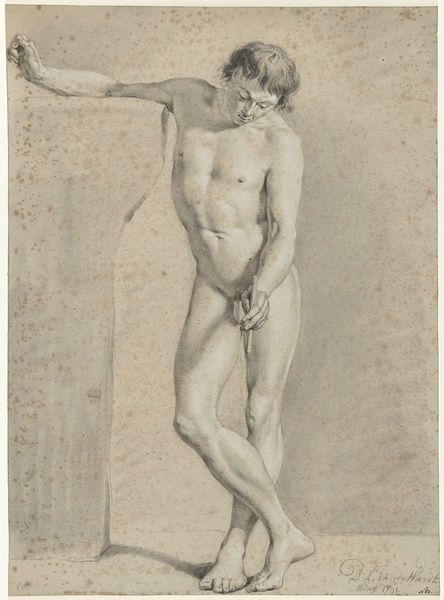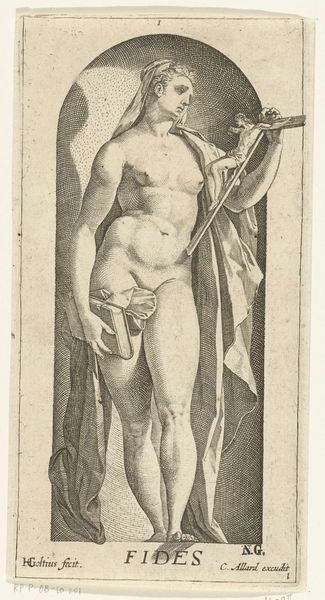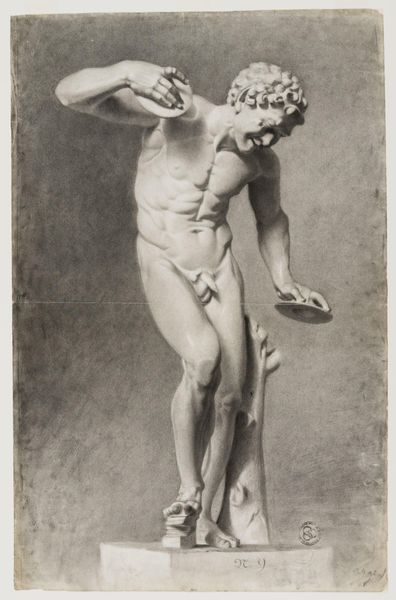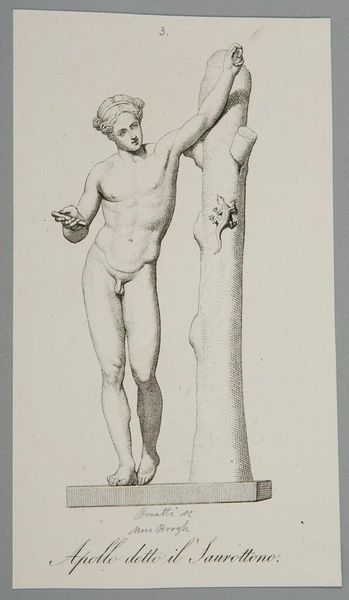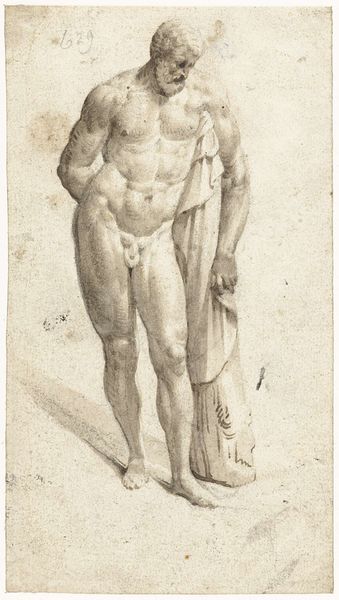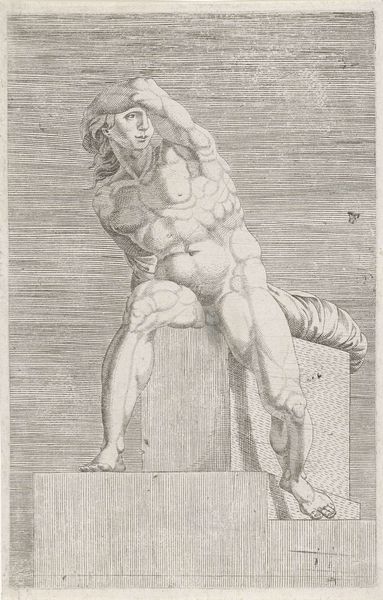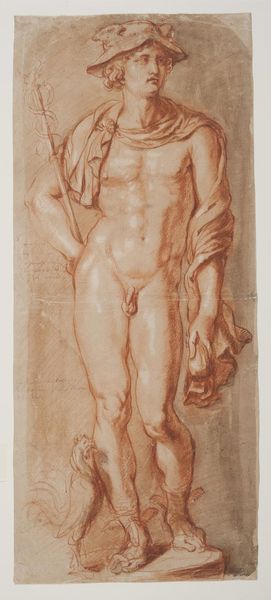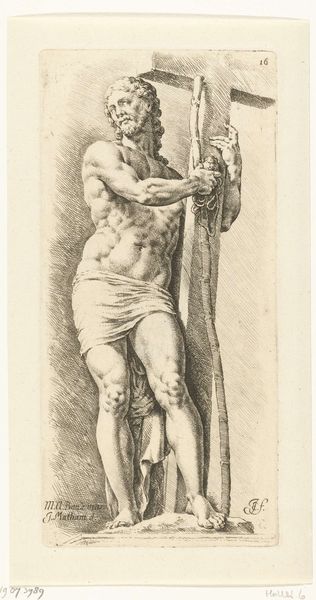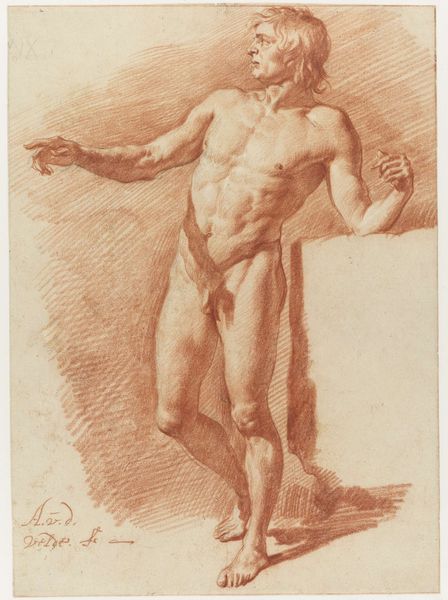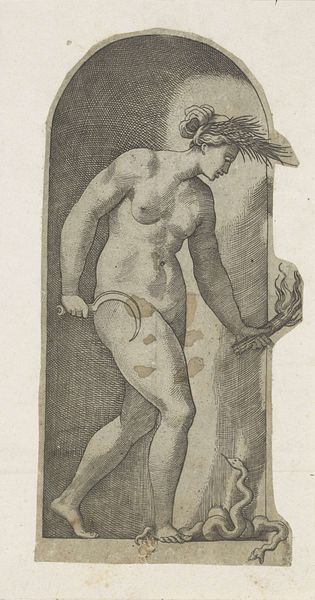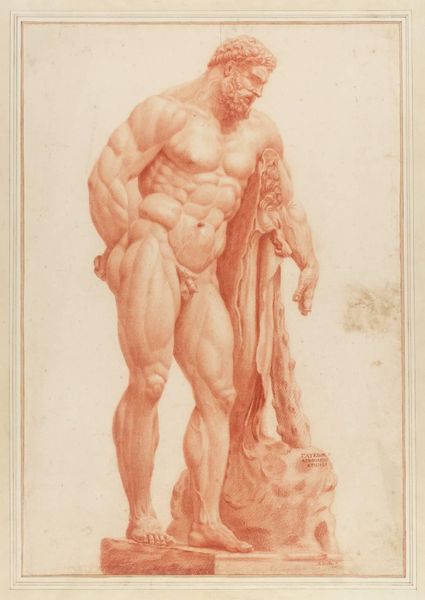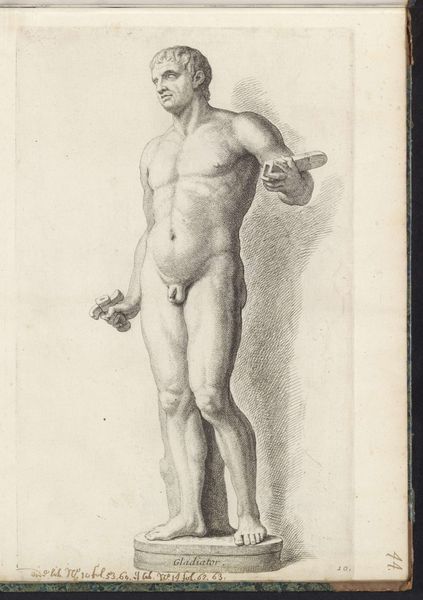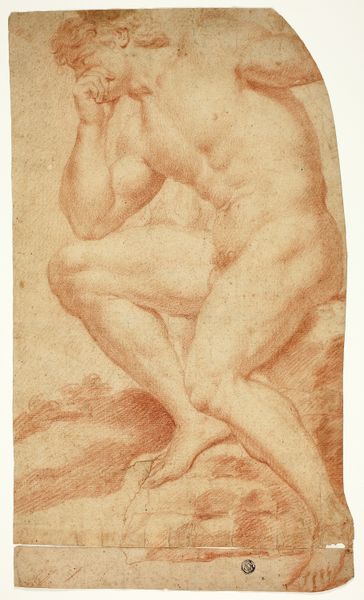
drawing, ink
#
portrait
#
drawing
#
allegory
#
baroque
#
classical-realism
#
figuration
#
ink
#
portrait drawing
#
history-painting
#
nude
Dimensions: height 197 mm, width 95 mm
Copyright: Rijks Museum: Open Domain
Editor: This is Jan de Bisschop's "Young Bacchus Standing," created sometime between 1648 and 1671. It's an ink drawing, and I’m struck by how sculptural it appears despite being on paper. The rendering of light and shadow really gives it form. What catches your eye about this piece? Curator: The composition is quite interesting. Note the pronounced contrapposto – the way Bacchus's weight is shifted, creating a curve in his stance. Observe how this torsion animates the entire figure, leading the eye from the foot resting on the base, upwards through the leg and torso. The drawing emphasizes the play of light across the anatomical structure; did you notice the subtle tonal gradations? Editor: Yes, definitely. It's like he's studied classical sculpture, and then translated it into this wash of ink. The hatching is minimal, it's mostly about building tone. Is that a deliberate choice, do you think? Curator: Undoubtedly. The reduction of detail focuses attention on the idealized form itself. Bisschop employs the ink to mimic the smoothness of marble, but also captures a sense of its inherent coolness, of skin rendered as stone. The figure and the vine-covered support form parallel axes of energy, the curves repeating yet distinct. The gesture with the shell seems oddly mannered, wouldn't you say? Editor: A little! It feels slightly out of sync with the rest of the figure, like a different study almost. But it does bring the eye back to the upper part of the drawing. Curator: Precisely. Formally, it creates a vital counterpoint to the denser area below. Consider the drawing not as representation, but as a study of compositional tensions and releases, the semiotic play of darkness and light, mass and void. Editor: That's a really interesting way to think about it – less about what it *is*, but how it *works*. Thank you!
Comments
No comments
Be the first to comment and join the conversation on the ultimate creative platform.
